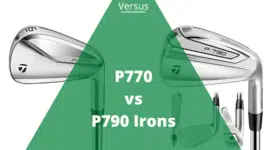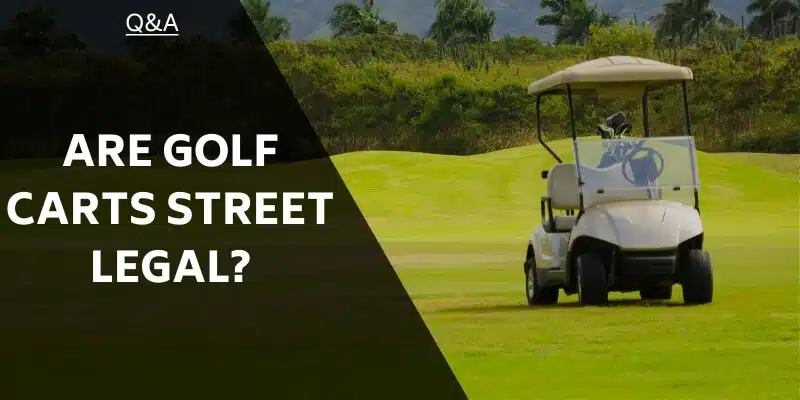Golf equipment technology advances at a rapid pace and manufacturers release new irons annually, in the worst-case bi-annually. Price increases are the norm, and you pay substantially more for a set of irons today than what it cost five or six years ago.
Unless it is imperative for you to have the latest technology in your bag to stay relevant and competitive, there is no need to join the annual rush to upgrade your golf irons. Today we take a look at how long your golf irons should last.
So, How Long Do Golf Irons Last?
If you want a short answer based on the number of years, it is a tricky question to answer. There are too many variables involved. A more relevant question would be the number of rounds that you can expect to get out of a set of irons.
The replacement period depends on the level of golf that you play as well as the frequency of play. The amount of practice that you undertake could influence the replacement cycle as well.
Quality irons will last longer than a cheap set of irons that do not go through the same quality control process and are not manufactured from quality materials.
A good estimation is for low handicap and regular golfers to replace the set of irons after approximately three hundred rounds or around four to five years. This will prevent the clubs from wearing out in places where you regularly strike the ball and keep you abreast of technological advances.
More casual golfers that are not so highly competitive could quite comfortably keep their irons for up to eight years, and at a push ten years, before falling too far behind with technology.
Most frequently used clubs like your short irons and wedges are more likely to wear out first.
Another key factor in the replacement cycle is the quality of care that you take of your clubs.
Regular cleaning will prevent unnecessary damage to the grooves and keep the spin pattern lasting longer. It is frustrating when you cannot control your distances due to dirty clubs.
Signs That Your Clubs Require Replacing
You will soon notice when your clubs need replacement. When you are consistently outperformed by newer irons or your clubs start showing physical signs of wear, you know it’s time to put that new set in your bag.
Overall Condition
Worn grips, a dented shaft, and a loose ferrule can easily be replaced and do not mean replacement.
When the appearance of the overall condition of your irons shows signs of major wear and tear, loads of chips and scratches on the impact area of the face, or any other sign that cannot be fixed by replacing the component, it’s time to look at what’s available.
Decrease in Performance
Your clubs will lose performance over their lifespan and when you cannot achieve the distances that you are used to, can’t work the ball around as much as you could previously, or lose the spin characteristics due to grooves being damaged, it’s time!
It is possible to have your clubs regrooved, but you will know this is only a temporary measure.
Other Reasons for Replacing Irons
During your golfing career, you will encounter many changes that may necessitate the replacement of your irons. Growing older you tend to lose distance and modern technology can add the lost distance back to your game.
Swing Changes
Every golfer goes through a swing change or two over the years to cater for their improved swing, improve their swing, or adjust to some physical constraints that may have crept in.
These swing changes may require you to change the clubs that you are using to receive optimal benefit.
Technology Advancement
Advances in technology add forgiveness and to some extent, distance, keeping you competitive. If you are having difficulties in a specific area of your game, it would be sensible to evaluate new technology to determine whether you can resolve the issue without making too many swing changes.
Replace All Clubs or Just Irons?
There is no need to replace all of your clubs at once. Actually, it is not even required that you replace all of your irons at the same time.
When your shorter irons and wedges show severe signs of wear and the rest are hardly used, you only have to replace the irons showing signs of wear. Many golfers combine clubs from different ranges to receive the optimum combination between longer and shorter irons.
This way you can stay abreast of technology without breaking your budget.
How to Extend the Lifespan of Your Clubs?
You can extend the lifespan of your irons by taking care of them while playing or when they are in storage.
Cleaning Your Irons
A good place to start is by cleaning your clubs regularly and keeping them clean. Any dirt on the clubface can result in scratches, dents, and other damage to the grooves.
Dirty grooves reduce the spin and performance of the club as well.
Wiping your clubface with a wet towel after every shot, cleaning the grooves, and drying it properly will reduce the damage.
Don’t forget to wipe the grip as well to ensure that you can hold onto the club during your swing.
Here is a handy video on how to clean your golf clubs.
Golf Bag
A golf bag catering with full-length individual dividers that can hold fourteen clubs or separate storage for your putter, will provide extra protection for your clubs. This is especially necessary for graphite shafts.
Impact Surfaces
Avoid hitting shots off surfaces that can damage your clubs such as cart paths, hitting mats, or hitting fixed objects on your swing through. Take a drop where possible, the long-term quality of your clubs is important.
Storage
When not in use store your clubs in an area where it is protected from the sun and severe temperature variations. Your car trunk tends to undergo temperature variations as well thus it is not a good storage place. Heat is not conducive to protecting your clubs.
Refurbishing Irons
It is possible to refurbish your clubs to look and perform nearly as well as it did at the time of purchase. However, this will not make it competitive with the latest technology.
Benefits of Replacing Irons
New irons are likely to aid you in some areas due to the improved technology released.
Areas that benefit most from the improvements are:
- Increased spin and distance
- Enhanced workability and feel
How Often Do Pros Change Their Irons?
Professional golfers are sponsored and have access to the latest technology from their sponsors. They generally change irons every year to endorse the latest versions for enhanced sales.
Their irons are specially fitted to ensure that they achieve maximum benefit from the technology.
Final Thoughts
The release of innovative technology on an annual basis tempts golfers to upgrade their irons. In recent years, the aesthetic appeal of some of the brands has enticed many golfers to upgrade purely on the looks and sound of the clubs.
However, this can be a costly exercise and the trade-in market on used clubs are not the best return on investment. This makes it feasible for golfers with a lower budget to explore the secondhand market. A good time to explore this is soon after the release of a new range of irons but beware of the age of the clubs you want to purchase.
Feedback and personal experience will be welcomed in the comments section below.
Related Articles
- How To Clean Golf Clubs and Make Them Last Longer
- The 7 Best Golf Irons Available for 2021! Reviewed For You!
- Why are golf clubs so expensive? What Do You Actually Pay For?
Nick is the founder of GolfSpan and an avid golfer. He's not quite a pro but has over 15 years of experience playing and coaching golfers worldwide. His mission is to bring the golfing community a better experience when it comes to choosing the right golf gear and finding the right setup for your game.


![Golf Terms Every Golfer Must Know [Over 250 Terms!]](images/golf-terms-267x150.png.webp)



